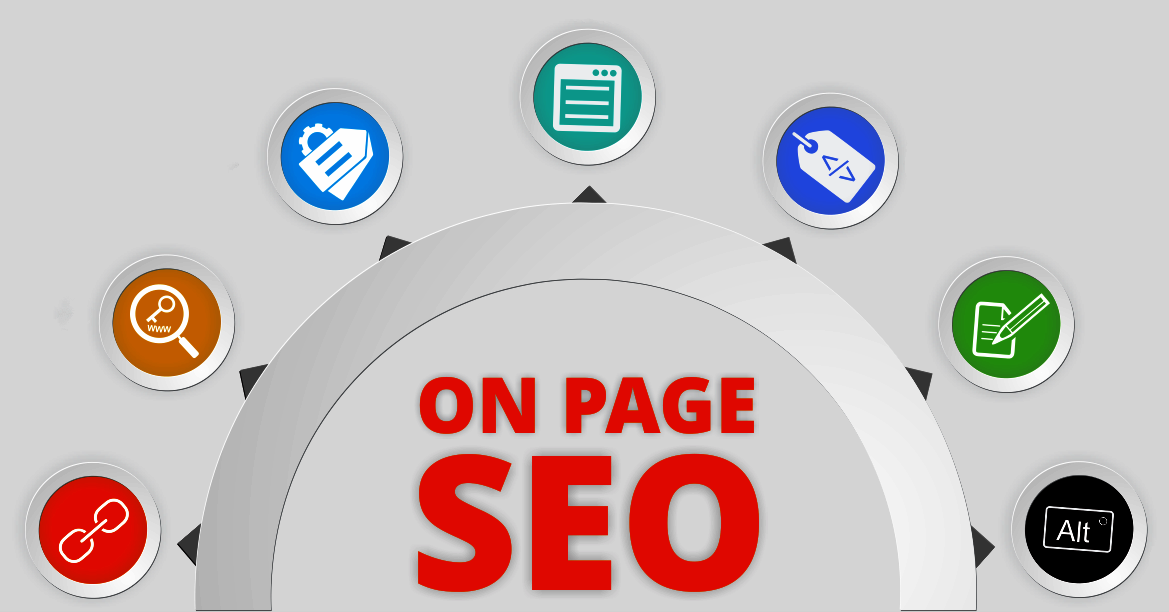The Ultimate Guide to Onpage SEO
On-page SEO is a crucial aspect of digital marketing that focuses on optimizing individual web pages to rank higher in search engine results.

On-Page SEO
In today’s digital age, having a strong online presence is crucial for any business or individual looking to succeed. And when it comes to increasing your website’s visibility, on-page SEO is a powerful tool that can make all the difference. In this comprehensive guide, we’ll cover everything you need to know about on-page SEO, from the basics to advanced techniques.
Introduction to On Page SEO
In today’s digital landscape, having a website is no longer enough. With millions of websites competing for attention, it’s crucial to ensure that your website stands out from the crowd. This is where on-page SEO comes in. By optimizing your website’s on-page elements, you can improve its visibility and attract more organic traffic.
What is On-Page SEO?
On-page SEO refers to the practice of optimizing various elements on your website to improve its search engine ranking. This includes optimizing your content, title tags, meta descriptions, header tags, images, URLs, and more. By optimizing these elements, you can make it easier for search engines to understand your website’s content and rank it higher in search results.
Why is On-Page SEO Important?
On-page SEO is crucial for several reasons. Firstly, it helps search engines understand what your website is about, making it easier for them to rank it for relevant keywords. Secondly, it improves user experience by making your website more user-friendly and easy to navigate. And finally, it helps drive more organic traffic to your website, which can lead to increased conversions and revenue.
On-Page SEO Checklist
- Keyword Research
- Title Tags and Meta Descriptions
- Header Tags
- Content Optimization
- Image Optimization
- URL Structure
- Internal Linking
- User Experience
- Mobile Optimization
- Site Speed
- Schema Markup
- Social Media Integration

Keyword Research
Keyword research is the foundation of any successful on-page SEO strategy. It involves identifying the keywords and phrases that your target audience is using to search for products or services similar to yours. By targeting these keywords in your content, you can increase your website’s visibility and attract more relevant traffic.
Title Tags and Meta Descriptions
Title tags and meta descriptions are HTML elements that provide a brief summary of your webpage’s content. They appear in search engine results and play a crucial role in attracting users to click on your website. By optimizing your title tags and meta descriptions with relevant keywords and a compelling call-to-action, you can improve your click-through rate and drive more traffic to your website.
Header Tags
Header tags, also known as H1, H2, H3, and so on, are used to structure your content and make it more readable. They also help search engines understand the hierarchy and importance of your content. By using header tags correctly, you can improve your website’s user experience and make it easier for search engines to crawl and index your content.
Content Optimization
Content is king when it comes to on-page SEO. By creating high-quality, relevant, and engaging content, you can attract more organic traffic and keep users on your website for longer. When optimizing your content, make sure to use your target keywords naturally and avoid keyword stuffing, as this can have a negative impact on your website’s ranking.
Image Optimization
Images are an essential part of any website, but they can also slow down your website’s loading speed if not optimized correctly. By compressing your images, using descriptive file names, and adding alt tags, you can improve your website’s loading speed and make it more accessible to search engines.
URL Structure
Your website’s URL structure plays a crucial role in its on-page SEO. By using descriptive and keyword-rich URLs, you can make it easier for search engines to understand your website’s content and rank it higher in search results. Additionally, a well-structured URL can also improve user experience and make it easier for users to navigate your website.
Internal Linking
Internal linking refers to linking to other pages on your website within your content. This not only helps users navigate your website but also helps search engines understand the hierarchy and relevance of your content. By linking to other pages on your website, you can also drive more traffic to those pages and improve their visibility.
User Experience
User experience is a crucial factor in on-page SEO. By making your website user-friendly, easy to navigate, and visually appealing, you can keep users on your website for longer and reduce your bounce rate. This, in turn, can improve your website’s ranking and attract more organic traffic.

Mobile Optimization
With more and more users accessing the internet through their mobile devices, having a mobile-friendly website is no longer an option but a necessity. By optimizing your website for mobile devices, you can improve user experience and make it easier for search engines to crawl and index your website.
Site Speed
Site speed is another crucial factor in on-page SEO. A slow-loading website can not only frustrate users but also negatively impact your website’s ranking. By optimizing your website’s images, code, and server response time, you can improve its loading speed and provide a better user experience.
Schema Markup
Schema markup is a type of code that helps search engines understand your website’s content better. By adding schema markup to your website, you can provide search engines with more information about your content, such as product reviews, ratings, and prices. This can help improve your website’s visibility and attract more relevant traffic.
Social Media Integration
Social media integration is not a direct ranking factor, but it can indirectly impact your website’s visibility. By sharing your content on social media platforms, you can attract more traffic to your website and improve its social signals, which can positively impact your website’s ranking.

